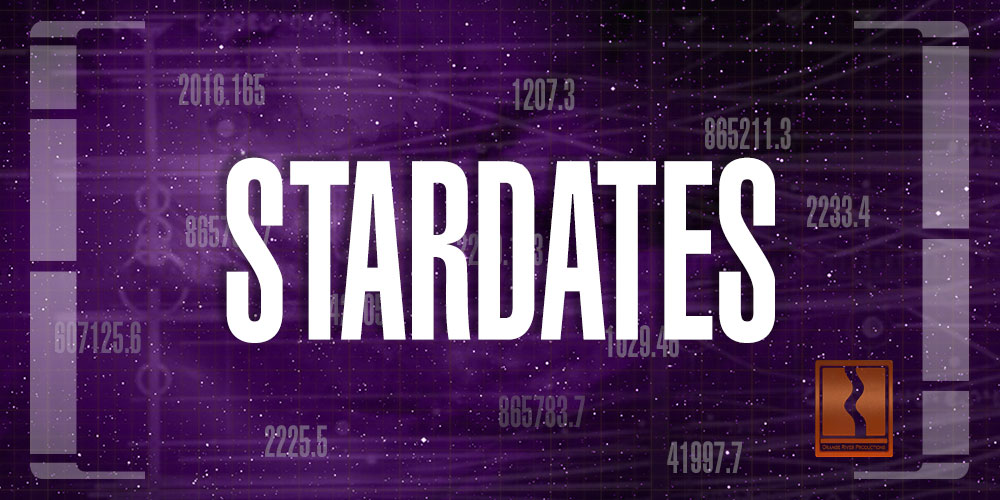Hey guys, Tyler here. We’ve all heard it: the opening of your favourite (or even your least favourite) Star Trek episode in which a Starfleet officer, usually a captain, records a log entry about the latest antics their ship or their crew has gotten into.
They usually start said entry with a Stardate—a unit of measuring time employed by the Federation and other societies. Usually expressed as a specific number of digits separated by a decimal point, these Stardates function as stand-ins for real-world dates like “March 18, 2222” or the like.
Stardates are used in seven of the ten Star Trek television series and most of the films. The format for Stardates has changed over the years, with distinct formats unique to The Original Series and The Next Generation eras, respectively, and even an original system devised for the Kelvin timeline movies.
Methods for calculating Stardates have not always been easy to crack, making them one of the most debated subjects among Trek fans. In this video, I’d like to explore the history of Stardates as they’ve been used throughout Trek and examine how useful they’d be at measuring time in our universe.
The Enterprise Era
Chronologically, the earliest usage of Stardates in the Star Trek timeline comes from Enterprise. While Starfleet in the mid-22nd century does not use Stardates, opting instead for Gregorian calendar dates, the Vulcans and the Xindi both appear to be familiar with the concept.
This means there may be some objective astronomical metric that can be used to calibrate Stardates, and such measurements can be translated across cultures with different counting systems.
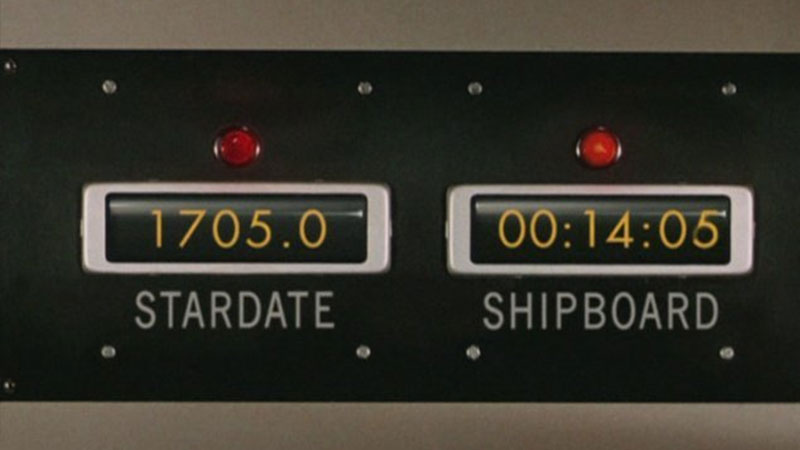
The Original Series Era
Indeed, when devising the Stardate system for The Original Series—which of course takes place over a century after Enterprise—Gene Roddenberry and his writing team wanted a system that was divorced from the normal progression of dates on Earth.
First utilized in the episode “Where No Man Has Gone Before,” TOS’s second pilot, Stardates were adapted from a method used by astronomers to calculate the time between events called the Julian day.
A Julian day number is an integer assigned to an entire solar day that has elapsed since noon on Monday, January 1, 4713 B.C. on the Julian calendar, which corresponds to November 24, 4714 B.C. on the Gregorian calendar.
This is the date that three multiyear cycles—the Indication, Solar, and Lunar cycles—all started simultaneously, and it precedes any other dates in recorded human history. For example, the Julian number for the day starting at noon Universal Time on January 1, 2000, is 2,451,545.
Most astronomers, however, use only the last five digits, and for Star Trek, Roddenberry borrowed the Julian system and shortened it to four digits, renaming it the “Stardate.” He brought in Sam Peeples—who wrote the script for “Where No Man Has Gone Before”—to help him devise a method of calculating Stardates.
According to journalist Joel Engel in his book Gene Roddenberry: The Myth and the Man Behind Star Trek, the two men “marked off sections on a pictorial depiction of the known universe and extrapolated how much Earth time would elapse when travelling between given points.”
They considered that the Enterprise’s warp engines violate Einstein’s theories of relativity, which hold that nothing can exceed the speed of light. They thus concluded that the “time continuum” would be different from place to place and would always differ from Earth time.
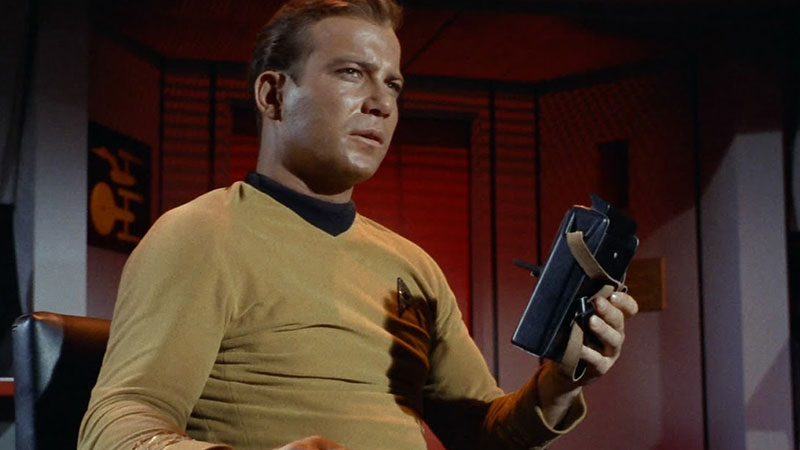
Scientifically, there is some truth to this, as objects orbiting large gravity wells like very massive black holes experience a form of time dilation. Think of the movie Interstellar, in which for every hour on the planet orbiting Gargantua, years pass in the rest of the universe.
But notice I said “the rest of the universe…” that’s because, across most of the space, time runs at effectively the same rate. This is because the laws of physics are what is called isotropic—they are uniform in all directions and only start to break down when crossing the event horizon of black holes.
The way the fundamental forces manifest—the behaviour of subatomic particles in an electrical field, the nuclear energy that binds stars together, and the gravitational constant that keeps galaxies from falling apart is the same forty billion light-years away as it is here.
Indeed, satellites orbiting the Earth must periodically reset their clocks to remain geosynchronous, but the difference is exceedingly insignificant compared to the effects of actual time dilation experienced by things travelling close to the speed of light. It’s like splitting hairs over the speed at which your feet age versus your head—that differential’s there, but it’s negligible.
So, given all this, what’s the point in using Stardates anyway? Well, regardless of their scientific accuracy, they were invented to avoid mentioning the century Star Trek takes place. Indeed, in Roddenberry’s initial pitch for The Original Series, the show was said to take place sometime between 1999 and 2999. That’s…incredibly specific, Gene. Thank you.
Somewhere between thirty and a thousand years after the British Invasion. Anyway, the point was to avoid arguments over whether specific technologies would have been invented or superseded by, say, the year 2265. Episodes were given Stardates consisting of four digits, like 1312, followed by a decimal point and a tenths digit, like .5. Each tenths digit is equivalent to a tenth of a day. Since episodes were aired out of order compared to how they were filmed, fans started to complain that episode Stardates were inconsistent, giving rise to the explanation that Stardates could go up or down depending on the Enterprise’s physical location in the galaxy.
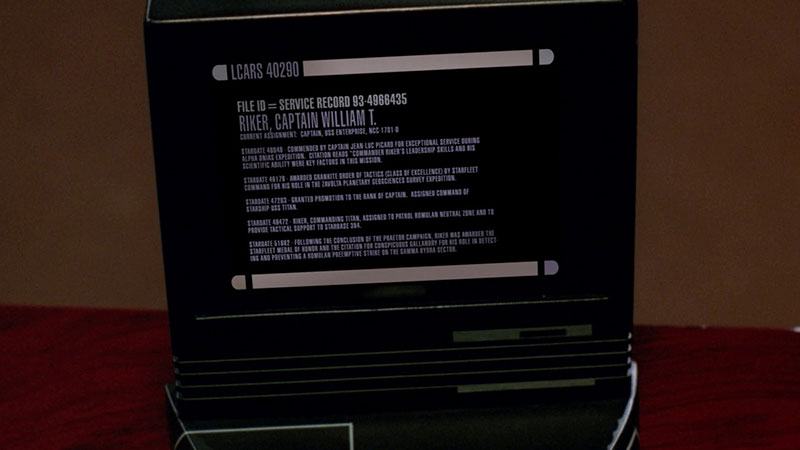
The Next Generation Era
In The Next Generation era, the Stardate system was revised, this time using a format consisting of five digits followed by a decimal. Most episodes of TNG use the following formula: the first digit is 4, indicating the 24th century; the second digit is the season number, and the last three digits progress consecutively throughout the season from 000 to 999.
The digit after the decimal represents, once again, tenths of a day. Because of the way this formula is set up, TNG Stardates was never designed to precisely correlate with Earth dates. One issue with this system is that a thousand “days” would elapse in a year.
Also, during the runs of DS9 and Voyager, the first digit rolls over to 5, meaning that in the universe, this digit can’t stand for a century on the Gregorian calendar as both of those shows are set in the 24th century. Indeed, production staffers and fans alike have been not-so-reluctant to point out that there are “ambiguities” inherent in Stardate calculation, even within singular episodes.
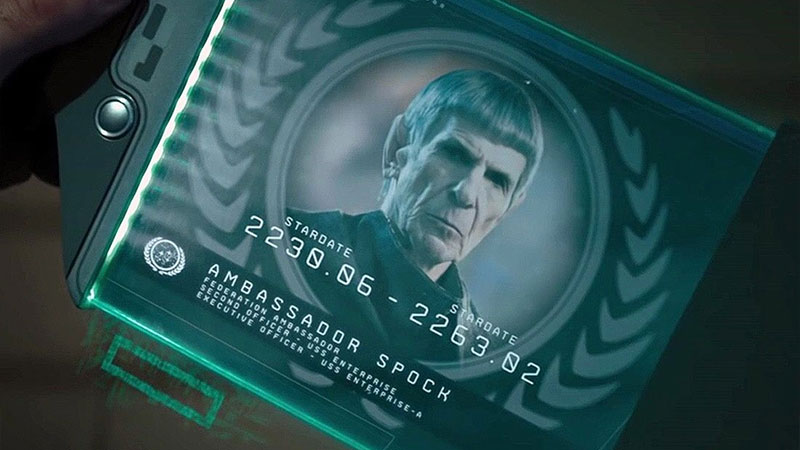
The Kelvin Timeline
The system devised by Roberto Orci and Alex Kurtzman for the Kelvin timeline films frankly makes more sense than all its counterparts. These Stardates simply begin with a Gregorian calendar year, like 2233 or 2258, followed by up to three digits after a decimal point to indicate the day of the year out of 365. For example, Spock’s log entry after the destruction of Vulcan is recorded on Stardate 2258.42, and the commissioning of the Jellyfish according to the ship’s computer is Stardate 2387, meaning the new system may have been introduced in the prime reality as well.
Of course, in the screenplay for Trek ’09, when asked about the Stardate in the film’s opening scene, Captain Robau says “2233.04,” though Orci has said the inclusion of a zero after the decimal point was an error. Regardless, it’s clear that the intent behind this revision was to make Stardates easier to understand, which I think is not at all a bad thing.

Star Trek: Picard
Michael Chabon, showrunner of Star Trek: Picard, eschewed the use of Stardates altogether. He stated in an Instagram story:
“Stardates, in my view…are a uniquely perverse form of uninformative information. Using a Stardate tells you precisely nothing. Even people who know how to interpret and convert them have to go off and interpret and convert them to have them mean something. Giving an audience the Stardate is like I wanted to know if I needed to put on a sweater or not, and you told me the temperature outside in Kelvin. ‘It’s 287 out.’”
No matter what you think of Michael Chabon, I think this was the right call. Stardates are unnecessarily confusing and uninformative. Even if the franchise embraced a format like Unix time—the number of seconds that have elapsed since January 1, 1970, widely used in operating systems—it still wouldn’t serve the purpose that a log entry is supposed to fulfil.
This is why I think Star Trek productions going forward ought to follow suit and commit to a different system of time measurement that’s more coherent. Whether it’s Gregorian calendar dates—which would, I assume, be used in various contexts anyway by authorities on Earth, the Federation’s capital planet—or the number of days since the launch of a particular ship’s mission, either of these would be more useful, in my opinion, than pesky Stardates.
And that’s where I stand. Or sit, in this case.
In Conclusion
Even if Stardates were created for a more valid purpose—to avoid being pinned down by the limits of critics’ imagination when it comes to mid-23rd century technology—it’s more useful, I think, to embrace that Star Trek is, in fact, a fictional universe that simply takes place a few hundred years in humanity’s future. Just tell good stories, and I promise you, the audience will suspend disbelief as necessary.
If you want to support my work even further, becoming a patron at patreon.com/orangeriver is a great way to do so.
Watch The Latest Video By Orange River Media Below
Thank you all so much for watching. I’m really interested to hear your thoughts in the comments.
If you enjoyed this video, be sure to leave a thumbs up down below and don’t forget to share it. That stuff really helps me out. If you haven’t subscribed, be sure to do that as well and click the bell icon to receive all notifications.
That’s all I have for this week, I’ll see you next time.
You can find Orange River Media at the links below
- YouTube: https://www.youtube.com/orangeriver
- Twitter: https://www.twitter.com/orangerivernw
- Instagram: https://www.instagram.com/orangeriver.nw
- Facebook: https://www.facebook.com/orangerivernw
- Patreon: https://www.patreon.com/orangeriver

